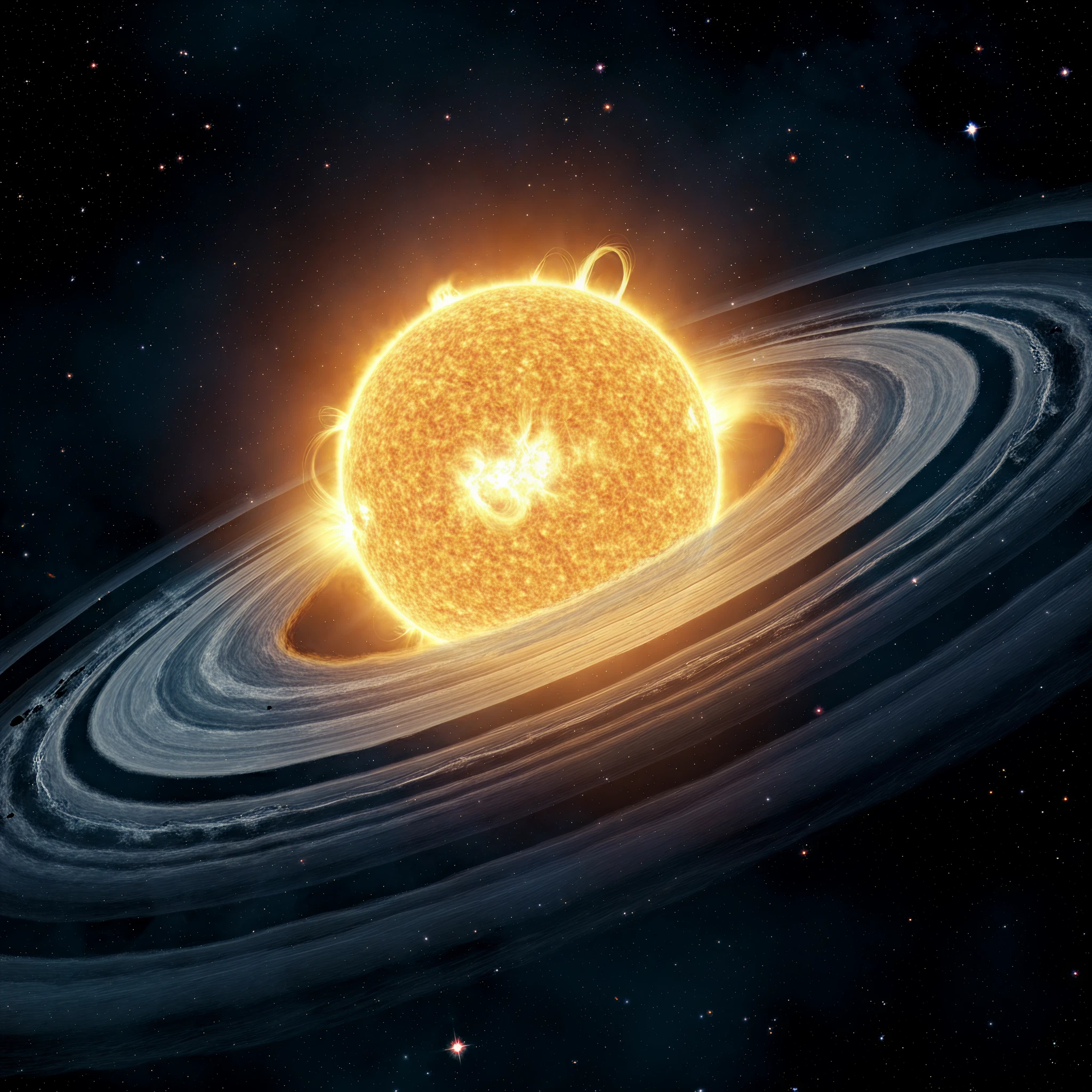The Milestone in Space Exploration
Astronomy has reached another incredible milestone with the discovery of water ice around HD 181327, a young star just 23 million years old. Using the James Webb Space Telescope (JWST), scientists have gathered groundbreaking evidence that not only enhances our understanding of planetary formation but also uncovers remarkable similarities between our Solar System’s origins and those of distant stellar systems.
What makes this discovery exciting? HD 181327’s protoplanetary disk holds immense amounts of water ice, drawing parallels to the Kuiper Belt, the icy expanse found in the outskirts of our Solar System. The confirmed presence of water highlights the critical role ice plays in creating planets and sustaining life as we know it.
Join us as we explore this cosmic breakthrough and how it transforms our knowledge of space!
What Is a Protoplanetary Disk?
A protoplanetary disk is a ring of gas, dust, and ice that circles young stars. Think of it as a nursery for planets, where celestial bodies slowly form over millions of years. Around HD 181327, this debris disk contains a staggering amount of water ice, enough to fill Earth’s oceans several times.
The good news doesn’t end there. These disks also serve a higher purpose, enriching their surrounding regions with the raw materials for planet formation. With JWST, scientists are observing HD 181327’s system in its early stages, providing a window into how our own Solar System may have formed billions of years ago.
Discovery Details
The advanced capability of the JWST has made it possible for astronomers to confirm the presence of crystalline water ice in HD 181327’s debris disk. Notable findings include:
- Water-Energy Balance: Over 20% of the disk’s outer debris ring is made up of water ice, primarily composed of fine “dirty snowballs” mixed with dust particles.
- Unique Distribution: While water ice dominates the outer debris ring, much less is present closer to the star, and it is virtually absent in the system’s center. Why the disparity? Scientists believe stronger ultraviolet radiation near the star vaporizes water, or icy material might be locked away in rocky planetesimals near the core.
- Colliding Cosmic Bodies: Ongoing collisions in the disk release water ice particles. These minute dusty water ice fragments are highly reflective and perfectly suited for detection by JWST’s Near-Infrared Spectrograph (NIRSpec).
This discovery is not just observational gold but critical for testing planetary formation models.
The Role of Water Ice in Planetary Formation
Water ice isn’t just decoration in the vastness of space; it’s pivotal in shaping planets. At its core, water ice contributes to the following cosmic processes:
- Facilitating Planet Coalescence: The abundance of icy material in disks aids the early accumulation of gas and dust, which helps form planets.
- Delivery Mechanism: Similar to Earth’s history, comets and asteroids in young systems like HD 181327’s might transfer water to terrestrial planets, subsequently creating conditions for life.
- Formation Dynamics: By observing icy debris, scientists can refine theories on the timeline and process of planet formation.
This discovery not only complements but also builds upon earlier observations made by telescopes like Spitzer, solidifying our understanding of debris disks and planetary birthplaces.
What Does This Mean for Space Exploration?
The significance of this discovery extends far beyond HD 181327. Here’s what it means for the future of space exploration and science:
1. A Glimpse Into the Past
By studying HD 181327’s protoplanetary disk, we gain invaluable insight into the origins of our very own Solar System. The structural and chemical similarities with Kuiper Belt objects confirmed in this study demonstrate that many star systems could potentially evolve into planetary systems like ours.
2. Indicators of Habitability
With water being a key component for life, its presence in debris disks offers clues to how habitable planets are formed. Such findings raise hopeful prospects of finding Earth-like planets in other star systems.
3. Advancing Space Science
The James Webb Space Telescope represents humanity’s ability to push technological boundaries. Its sensitivity to detect even minute amounts of water ice ensures a multitude of upcoming discoveries about young stars and planetary systems beyond our imagination.
Final Thoughts
The discovery of water ice around HD 181327 marks a monumental step forward in understanding planetary formation and the potential ingredients for life scattered across the cosmos. It is a fascinating reminder that while Earth’s oceans may be unique within our Solar System, the building blocks of water are far more universal in nature.
Although these findings solely focus on HD 181327 for now, they pave the way for astronomers to study other young star systems and perhaps reveal even more intriguing secrets about the universe. These observations are only the beginning.
Want to stay updated on the latest in space exploration and cosmic findings? Bookmark your source for all things astronomy and join in the discussion as we uncover the universe’s timeless mysteries.








